Wrapper Mesh
![]()
Dialog Box
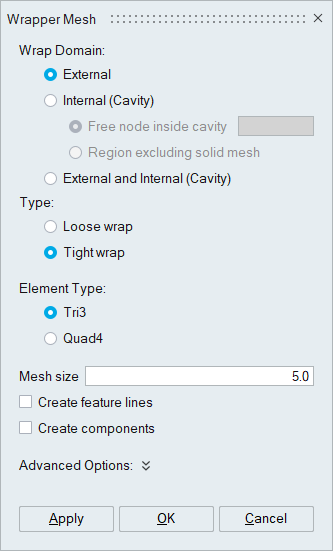
This option is used to generate wrapper mesh which is used for CFD and NVH analysis.
The intersections in the input bodies is not a concern to the Wrapper mesh. It extracts the domain even for the bodies which has self intersections or intersections across bodies (non-congruent mesh between bodies). As long as the input bodies does not contain any leak, with respect to the mesh size, the interested domain could be obtained. To check for leaks, use Mesh > Verify > Identify Leaks.
Wrap Domain
Wrapper mesh for the interested domain is created using the following options:
- External
This option is used to create the wrapper mesh for the outermost domain.

- Internal (Cavity) : Using free node
This option is used to create the wrapper mesh for the domain defined by the free node.

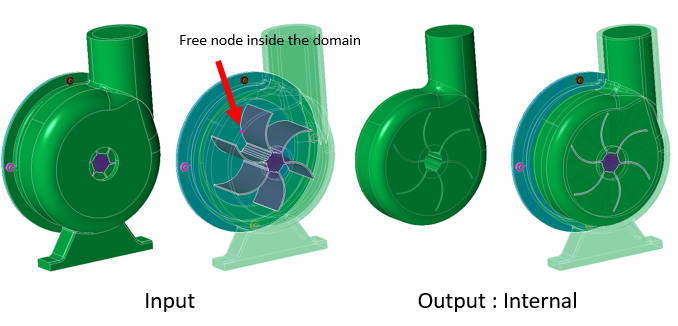
- Internal (Cavity) : Region excluding solid mesh
This option is used to create the wrapper mesh for the domain that does have solid elements (tet/wedge/hex/pyramid). It is used to extract all the vacant or air domain. This is supported only for FE bodies.
In the below example, the pipe bodies are all solid and the inlet and the outlets are closed using sheet bodies. The inner fluid cavity is extracted using this option without specifying the nodes. This option comes in handy for CFD, where we want to get all the air / fluid domain.

- External and Internal (Cavity)
This option is used to create the wrapper mesh for all domain.
Type
Loose Wrap
Loose Wrap generates a wrapper mesh that encloses the input bodies.
Example 1
Loose wrap is done with Mesh Size = 1. The output mesh encompasses both the bodies.
- Input
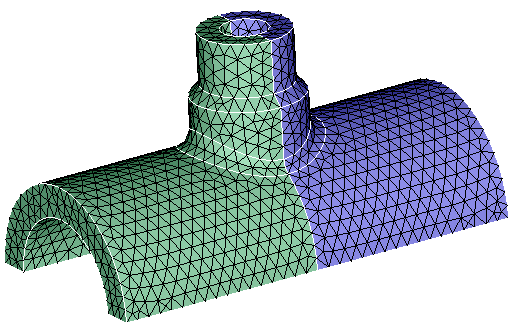
- Output
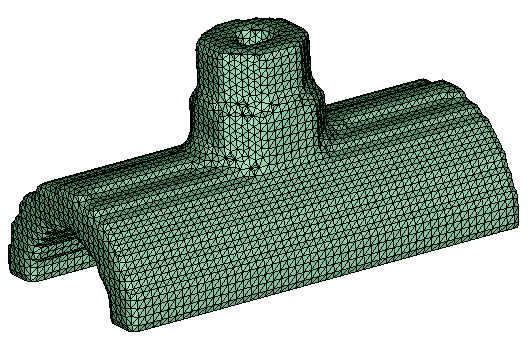
Tight Wrap
Tight Wrap generates a wrapper mesh which lies along the geometry in most of the places.
Example 2
For the same body in Example 1, Tight Wrap is done with Mesh Size = 1.
- Output

Element Type
Generates wrapper mesh with Tri or Quad elements.
Mesh Size
Mesh size specifies the required mesh size.
Create feature lines
This options is uses to recover the feature lines / edges.
Create components
This option instructs the mesher to split the output wrapper mesh into its input components. For the above input, if Create Components toggle is tuned ON, it will create two bodies. The input body names will be retained in the output wrapper mesh body.
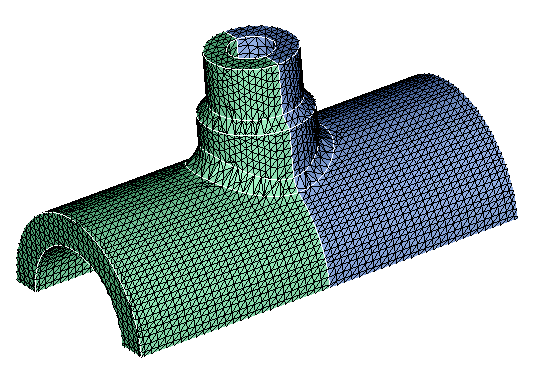
Advanced Options
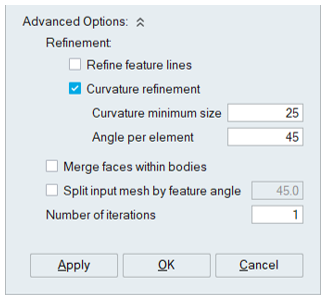
Refine Feature Lines
This toggle is used to refine along feature lines created using the feature angle option or along the wire body given as input or along the feature lines (topological edges) present in the input mesh, to capture the features. The refinement value is taken as 1/4th of the specified mesh size.
Curvature Refinement
This toggle instructs the mesher to refine based on the curvature of the input mesh. Curvature minimum size and Angle per element defines the minimum element size while performing curvature based refinement.
Merge faces within bodies
This toggle instructs the mesher to recover the feature lines across the bodies. Feature lines within the bodies will not be recovered.
Split input mesh by feature angle
The feature lines will not be present for models imported from deck files. Instead of breaking the faces using feature angle and then creating the edges to preserve the geometry, Feature Angle provides a one step solution for this. It will automatically preserve the geometry based on the specified feature angle.
Number of Iterations
Number of Iterations is used to get a smoother mesh.
Mesh Controls
Wrapper mesh supports the following mesh controls:
- Body mesh control
- Face mesh control
- Region mesh control - Cuboid
Mesh controls are applied to the bodies / faces and region with size as 50 and global wrapper mesh size of 250 is used.
